Noirvember Review: 'The Killing'
Every November fans of cinema celebrate one of the mediums most influential periods, the era of the film noir. This movement from the 1940's through the 1950's, presented audiences with edgy pulp crime flicks with a dark and moody stylization. Film noir gives moviegoers no shortage; troubled antiheroes, seductive femme fatales, grizzled detectives, ruthless villains, urban wastelands, and violent crimes. This month I will be looking at some of the best noirs for what has been dubbed Noirvember.It goes without saying that cinephiles revere Stanley Kubrick as one of the most visionary filmmakers to ever work in the medium. Movies like; Dr. Strangelove, 2001: A Space Odyssey, a Clockwork Orange, and the Shining easily rank among the greatest films ever made. Even early in his career, we see the director had an eye for stunning visual storytelling as perfectly showcased in the 1956 film we will be looking at today. Despite the fact that this was only his first major Hollywood production, Kubrick made what many argue is the best heist film of all time with this noir masterpiece, the Killing.
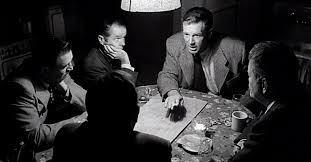
Fresh from a stint in , Johnny Clay has meticulously planned what will undoubtedly his biggest score ever. In a few days time the local race track is estimated to pull in a cool $2,000,000 which will be held in a back office and if he can score it, Johnny and his dutiful wife can buy themselves a new life. After constructing a complex and time-sensitive plan to pull off this heist, Clay assembles a motley crew to help him put his plans into action. A few of the track employees, a crooked cop, a mentally unstable sniper, and a European all join him with the promise of making it out big with their cut. Each of his cohorts are given their individual part to play in this intricate plot and the slightest mishap will jeopardize everything. Naturally things do not go as planned and unforeseen problems throw a wrench into things. The greatest of these is Sherry, the scheming wife of the team's pushover George. Once she discovers the heist her husband is tied up in, she tells her side lover so that he can make his own plans to get the loot and the two of them can run off together. Things truly fall apart after the job as Clay is unexpectedly delayed in getting back to his crew, which gives Sherry's lover the chance to get the drop on the rest of the team. A brief but incredibly violent gunfight leaves Clay as the sole survivor with the entirety of the dough. Forced to pack it all into a broken secondhand briefcase, he and his wife book it to the airport for their getaway, but a twist involving a small dog and a luggage cart leads to the couple losing everything and landing in the hands of the authorities.
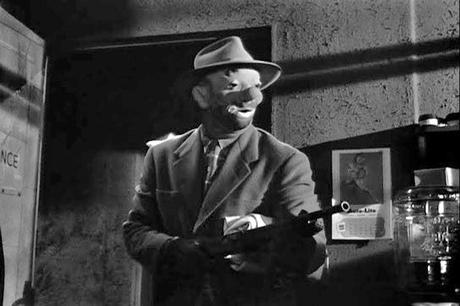
With a few movies already under his belt, United Artists gave the young Stanley Kubrick the chance to make his first major Hollywood feature. This proved to be a decision they would regret, as the director constantly fought against anyone else's input while making the Killing. Nowadays Kubrick's eccentricities and rigid devotion to his detailed vision are just contributing factors to his overall legend, but as you can imagine a young director having that attitude with a major motion picture studio did not win him many friends. United Artists were so upset over their experience working with Kubrick that when the movie was finally released, they dumped it as the second half of a double feature in the hopes it would be glossed over and forgotten. It was not just the producers and studio bosses he was in conflict with; veteran cinematographer Lucas Ballard also clashed with Kubrick, as he viewed many of the young auteur's methods as amateurish. At one point Kubrick even kicked Ballard off the set, when he refused to follow the director's wishes of filming the bloodsoaked aftermath of the movie's famed shootout with a handheld camera. Stanley Kubrick instead opted to pick up the camera and film it himself, providing viewers with one of the most striking and memorable moments of the film. As fate would have it, this clash of generations was largely emblematic of this movie as a whole. While Stanley Kubrick paid tribute to many of the great noirs which inspired him, he was also a visionary filmmaker who wanted to bring his own style to the film. In hindsight, many historians have pointed to the Killing as being the start of a great shift in movies as a new class of young filmmakers were starting to trickle in with fresh ideas ready to buck the system. In fact following this film, Kubrick would go on to Paths of Glory and Spartacus the two films which truly put him on the map.
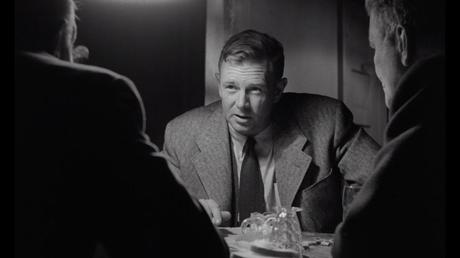
One of the innovative plot devices Stanley Kubrick utilized masterfully with this particular project was the crisp but nonlinear timeline of the story. The audience's attention would have to be placed fully on the movie without distraction, otherwise they would miss crucial elements. At the studio's demand, a narrator was added to the film to make things easier to understand for moviegoers, as he keeps us abreast of the timing and location of events. Even still the young director would have the actual film often conflict with what the moviegoer was just old by the narrator. With a sleek 90 minute runtime, the Killing is concise and to the point with no time for filler. Much like the heist in the film, every little detail that happens is crucial to the overall story arc. The fast pace of the flick is the driving force behind it's suspense because even the slightest delay is cause for the feeling of pins and needles. Even a seemingly simple moment of Johnny struggling to close and lock a busted briefcase inspires panic.
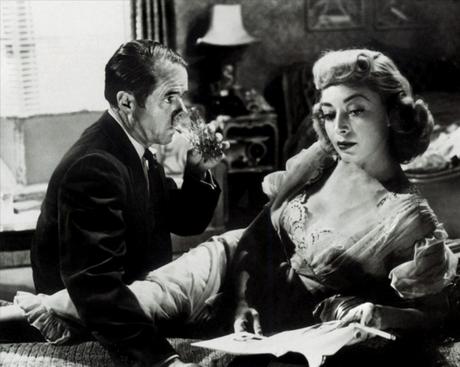
Just like Johnny Clay in the film, Stanley Kubrick meticulously assembled his cast to pull off this job. Though he was coming to the end of the "leading man" era of his career, Sterling Hayden was still respected as a movie tough guy and was a perfectly believable ringleader to this crew of thugs and miscreants. Years later he would reunite with the director when the two made the dark comedy classic Dr. Strangelove: Or How I Stopped Worrying and Learned to Love the Bomb. Elisha Cook Jr. made a career playing spineless pushovers so he fit the part perfectly as George an employee at the track who is brought into the scheme. His wimpy character was ideal to play off of the scene stealing Marie Windsor as his adulterous conniving wife. Kubrick was adamant about casting Windsor in the role of Sherry, and even delayed production so that this film could fit into her schedule. The actress, who was no stranger to playing femme fatales, hoped this movie would give a boost to her declining career. It certainly did as her performance is regularly held up as the best in the film and possibly the best of Windsor's entire career. Another standout in this ensemble, with just a few minutes of screentime, was Timothy Carey as Nikki Arcane, the sharpshooting gunman who has more than a few screws loose. Carey was a go-to actor for directors looking for a lunatic, though they had to prepare themselves as in real life he was incredibly eccentric and prone to outbursts. Carey's performance carries with in an aura of unpredictability bound to make any viewer uncomfortable. His best work in the film comes opposite a humble attendant in the parking lot where he sets up his sniper's nest. Within the span of a few minutes we see their interactions evolve from friendly to grossly offensive, courtesy of his captivatingly deranged performance.
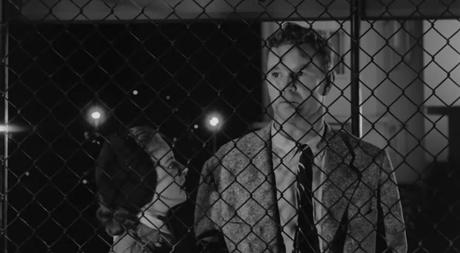
Though the studio that produced it turned it's back on the film, the Killing has gone on to become one of if not THE greatest heist film in movie history. It is fast paced and suspenseful with an entire cast is at the top of their game. Juggling as much as he did for this film showed that even at this early career stage Stanley Kubrick was a gifted director. While his fractured relationship with producers should have doomed his career going forward, one producer developed a soft-spot for the young artist and put him in the director's chair for Spartacus and the rest is history. This Noirvember if you feel the need to celebrate one of the all-time great filmmakers be sure to give a watch to the Killing.

